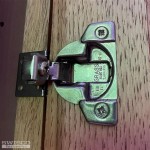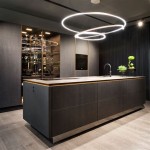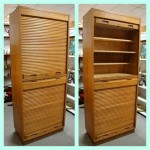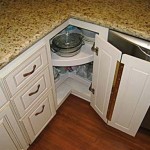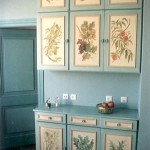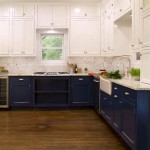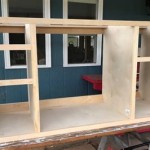Kitchen Cabinet Hardware: A Comprehensive Guide
Kitchen cabinet hardware, often an overlooked detail, plays a pivotal role in both the functionality and aesthetic appeal of a kitchen. More than just decorative accents, these elements are integral to the ease of use and longevity of cabinetry. Choosing the right hardware involves considering a variety of factors, from material and style to functionality and budget. This article provides a comprehensive overview of kitchen cabinet hardware, exploring the different types available, their various functions, and the key considerations for making informed decisions.
The term "kitchen cabinet hardware" encompasses a broad range of components, each with a specific purpose. These include, but are not limited to, knobs, pulls, hinges, drawer slides, and latches. Each of these components contributes to the overall usability and design of the kitchen space. A well-chosen selection of hardware can transform a mundane kitchen into a stylish and highly functional area.
Understanding the Different Types of Kitchen Cabinet Hardware
Kitchen cabinet hardware can be broadly categorized into several key types, each with its own specific function and design considerations. Understanding these categories is crucial for making informed decisions when selecting hardware for a kitchen renovation or new construction project.
Knobs: Knobs are typically small, rounded or shaped handles that are attached to cabinet doors and drawers with a single screw. They are often used for smaller cabinets and drawers, and are available in a wide variety of styles, materials, and finishes. Knobs are generally more affordable than pulls and can be a cost-effective way to update the look of existing cabinets.
Pulls: Pulls are longer handles that are typically attached to cabinet doors and drawers with two or more screws. They offer a more substantial grip and are often preferred for larger cabinets and drawers. Pulls are available in a variety of styles, including bar pulls, arched pulls, and cup pulls, and can significantly impact the overall design aesthetic of the kitchen.
Hinges: Hinges are the mechanisms that allow cabinet doors to swing open and closed. They are essential for the functionality of cabinets and come in a variety of styles, including concealed hinges, surface-mounted hinges, and self-closing hinges. The choice of hinge depends on the type of cabinet, the desired look, and the desired level of functionality.
Drawer Slides: Drawer slides are the mechanisms that allow drawers to open and close smoothly. They are typically mounted on the sides of the drawer and the inside of the cabinet. Drawer slides are available in a variety of load capacities and extension lengths, and can significantly impact the functionality and usability of drawers. Common types include ball-bearing slides, undermount slides, and soft-close slides.
Latches: Latches are used to keep cabinet doors and drawers closed. They are typically used for cabinets that need to be securely closed, such as cabinets containing hazardous materials or fragile items. Latches are available in a variety of styles, including magnetic latches, touch latches, and spring-loaded latches.
Beyond these core components, other types of hardware can enhance the functionality and aesthetic appeal of kitchen cabinets. These include appliance pulls, which are larger and more robust than standard pulls; decorative backplates, which are placed behind knobs or pulls to add visual interest; and organizers, such as pull-out shelves and spice racks, which maximize storage space and improve accessibility.
Factors to Consider When Choosing Kitchen Cabinet Hardware
Selecting the right kitchen cabinet hardware involves careful consideration of several key factors. These factors include the style of the kitchen, the functionality requirements, the budget, and the desired level of durability.
Style and Aesthetics: The style of the kitchen is a primary consideration when selecting hardware. The hardware should complement the overall design aesthetic of the kitchen, whether it is traditional, modern, contemporary, or transitional. For example, sleek and minimalist bar pulls are often used in modern kitchens, while ornate knobs and cup pulls are more commonly used in traditional kitchens.
Functionality and Ergonomics: The hardware should be easy to use and comfortable to grip. Consider the size and shape of the knobs and pulls, and ensure that they are appropriate for the size of the cabinets and drawers. For example, larger cabinets and drawers may require larger pulls for easier access. The functionality of hinges and drawer slides is also crucial. Opt for self-closing hinges and soft-close drawer slides for enhanced convenience and safety.
Material and Durability: The material of the hardware should be durable and resistant to wear and tear. Common materials include stainless steel, brass, bronze, and zinc. Stainless steel is a popular choice for its durability and resistance to corrosion. Brass and bronze offer a more traditional look and are also relatively durable. Zinc is a more affordable option but may not be as durable as stainless steel or brass.
Finish and Color: The finish and color of the hardware should complement the color of the cabinets and the overall color scheme of the kitchen. Common finishes include polished chrome, brushed nickel, oil-rubbed bronze, and matte black. Consider the maintenance requirements of the finish. For example, polished chrome is easy to clean but may show fingerprints more easily than brushed nickel.
Budget: Kitchen cabinet hardware can range in price from a few dollars per piece to hundreds of dollars per piece. Set a budget before you start shopping and stick to it. Consider the overall cost of the project, including the cost of the cabinets, countertops, and appliances, and allocate a reasonable amount to hardware. Consider purchasing hardware in bulk to save money.
Installation: The ease of installation is another important consideration. Some hardware may require professional installation, while others can be easily installed by a homeowner. Consider your skill level and the complexity of the installation when selecting hardware. Ensure that you have the necessary tools and equipment before you start the installation process.
Maintaining and Caring for Kitchen Cabinet Hardware
Proper maintenance and care are essential for extending the lifespan of kitchen cabinet hardware and preserving its appearance. Regular cleaning and occasional repairs can prevent corrosion, looseness, and other issues. Here are some key tips for maintaining and caring for kitchen cabinet hardware.
Regular Cleaning: Regularly clean the hardware with a mild soap and water solution. Use a soft cloth to wipe down the hardware, and avoid using abrasive cleaners or scouring pads, which can scratch the finish. Pay particular attention to knobs and pulls, which are frequently touched and can accumulate dirt and grime. For stubborn stains, try using a mixture of baking soda and water.
Tightening Loose Screws: Periodically check the screws that hold the hardware in place and tighten them as needed. Loose screws can cause the hardware to wobble or fall off, and can also damage the cabinets. Use a screwdriver that is the appropriate size for the screws, and avoid overtightening them, which can strip the threads.
Lubricating Hinges and Drawer Slides: Lubricate hinges and drawer slides periodically to keep them operating smoothly. Use a silicone-based lubricant or a dry lubricant, and apply it sparingly. Avoid using oil-based lubricants, which can attract dust and dirt. Wipe away any excess lubricant with a clean cloth.
Preventing Corrosion: To prevent corrosion, keep the hardware dry and avoid exposing it to harsh chemicals or cleaning agents. If the hardware is exposed to water or moisture, dry it immediately with a clean cloth. Consider applying a protective coating, such as a clear lacquer or a wax polish, to the hardware to protect it from corrosion.
Replacing Damaged Hardware: Replace any damaged hardware as soon as possible. Damaged hardware can be a safety hazard, and can also detract from the overall appearance of the kitchen. When replacing hardware, choose a replacement that is the same size and style as the original hardware. If you are unable to find a direct replacement, consider replacing all of the hardware in the kitchen to ensure a consistent look.
By following these maintenance and care tips, one can keep kitchen cabinet hardware looking and functioning its best for years to come. This contributes not only to the aesthetic appeal of the kitchen but also to its overall functionality and longevity.
In conclusion, selecting and maintaining kitchen cabinet hardware is a crucial aspect of kitchen design and functionality. A thorough understanding of the different types of hardware available, the factors to consider when choosing hardware, and the proper maintenance techniques are essential for creating a kitchen that is both beautiful and functional.

Trending Cabinet Hardware At Lowe S

Cabinet Hardware Other Finish Touches Norfolk Kitchen Bath

Homdiy Cabinet Handles Modern Black Pulls Stainless Steel Cabinets Hardware Square

Best Kitchen Cabinet Hardware 2024

Kitchen Cabinet Hardware Ideas The Home Depot

How To Choose Between Knobs Or Pulls On Kitchen Cabinets

Best Hardware For White Shaker Cabinets Lily Ann

How To Use Brass Cabinet Hardware Around Your Home

Modket Brushed Satin Brass Gold Modern Kitchen Cabinet Handles Pulls Knobs Hardware Bathroom Drawer Dresser Square Stainless Steel

62 Unique Kitchen Cabinet Hardware Ideas For Your Home Best Cabinets Handles
Related Posts


